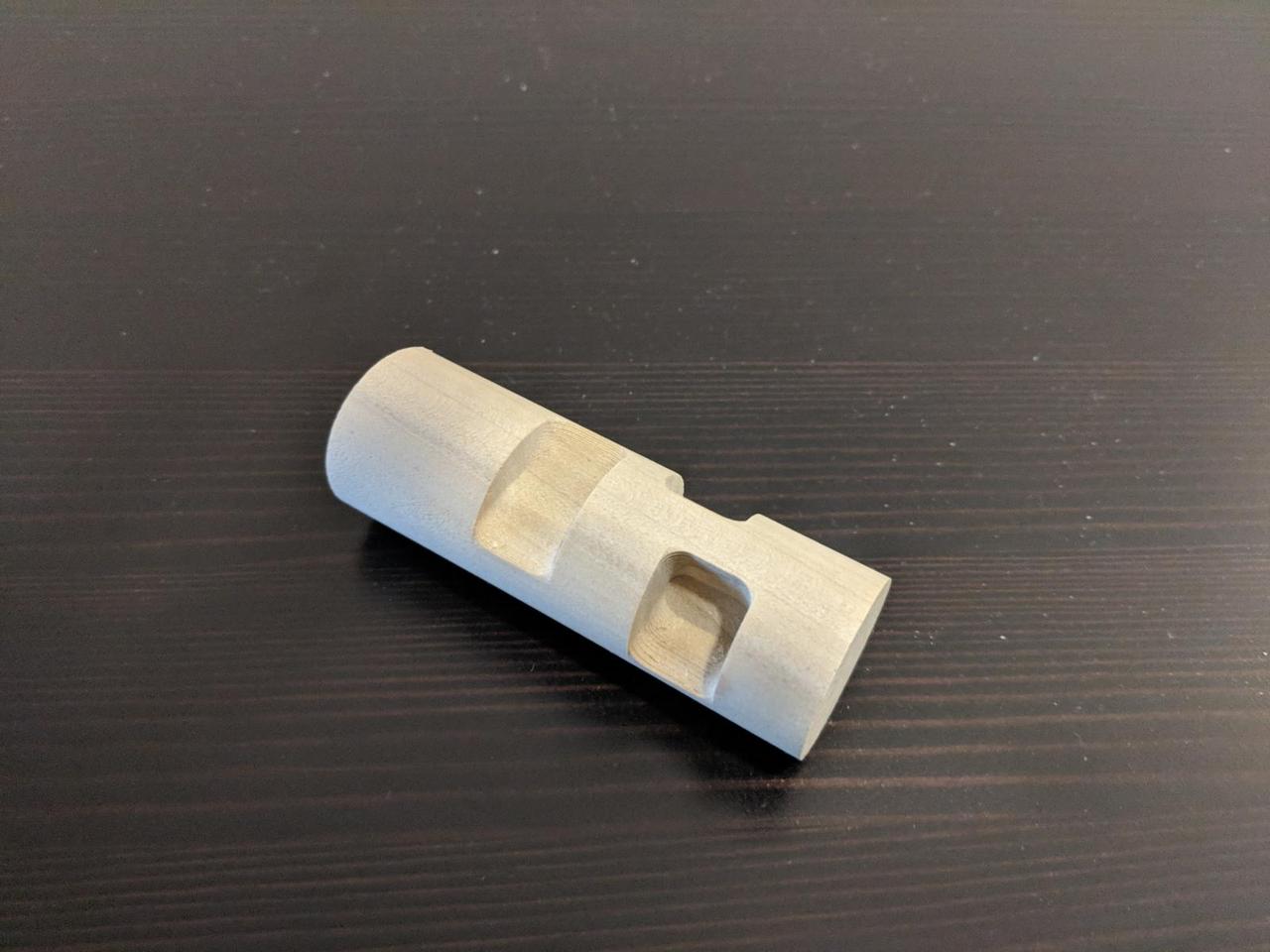Sprint 1
Our next assignment for Collaborative Design is to write code for a crude prototype. It doesn't have to look pretty; we just need to vet our ideas and build something to see if things work as we expect.
Our next assignment for Collaborative Design is to write code for a crude prototype. It doesn't have to look pretty; we just need to vet our ideas and build something to see if things work as we expect.
This week's assignment is the Four-Axis Mill skill builder. Our goal was to get some experience using the machine.
I milled this simple object out of a dowel rod that was left over from a previous assignment.

Not everything went as expected. I did learn a lot about the limits of the machine though, and that makes me happy.
My next project is to build a wooden mallet with the lathe. It was quite a challenge! I look at this mallet and am amazed I was able to make this. The wood lathe is an intimidating machine.

Today I am meeting with ITP's Feedback Collective to discuss this project. I'm going to use this blog post to present what my project is about so this post will provide a review of what I've accomplished.
The basic idea is to take Google Street View photos and stylize them to make them more visually appealing. Although the Google Street View tool is an amazing application the photos taken can be fairly dull looking. Google is working to address this but they are aiming for a high degree of realism. My goal is to take a much more artistic approach.
Our second assignment for Collaborative Design is to complete a "Readout" for our project. We now have a name for our project and a brief elevator pitch. We also did a few user interviews and thought about the technology we might use to build a proof of concept.
Sherrie Levine emerged as an important artist in the early 80's. She is famous for her Appropriation Art where she would take photographs of widely distributed photos made by famous male artists and present the work as her own, examining the concept of originality.
I created a short 10 minute presentation on Sherrie Levine to share with the class.
Xu Zhen (b. 1977) is a Chinese multimedia artist living and working in Shanghai, China. He is a prominent young Chinese artist who primarily works with photography, installation art, and video to address social and cultural issues.
Zhen’s pivotal work is the short film Rainbow (1998). This piece shows the impact of Zhen’s bare back being beaten until it turns bright red. The hand striking his back is edited out of the film but the audio of the slapping noise persists. He created this at age 21 and presented it at the Venice Biennale in 2001, making him the youngest Chinese artist to participate in the event. Another important early work is Shouting (1998). In this work he films pedestrians reacting to the noise of him shouting on a busy street. In both pieces Zhen is challenging and shocking the viewer with his behavior.
Adrian Piper (b. 1948) is an American conceptual artist and philosopher whose art career has spanned 5 decades. Her work addresses racism and the marginalization of minorities in western society by challenging us to face our racist views and attitudes. The artistic message is more than simply being critical of racism; it is about facing the illusions we tell ourselves about the reality of how appropriately we treat minorities and people of color.
Piper was born in New York City and attended a private school with mostly wealthy white students. She earned an associate’s degree from the School of Visual Arts in 1969 and a bachelor’s degree in Philosophy from the City College of New York in 1974. She went on to study Philosophy at Harvard where she received her master’s and PhD in 1977 and 1981. While studying in these programs she was also involved in New York’s art community, working at the Siegelaub Gallery and meeting other prominent artists of the time.
I made a longer version of the prototype I showed in my Midterm Status post. This took a week to complete:
Our first assignment for Collaborative Design is to brainstorm a use case for a potential AI-related project. We needed to define the use case and articulate personas to motivate the product design.